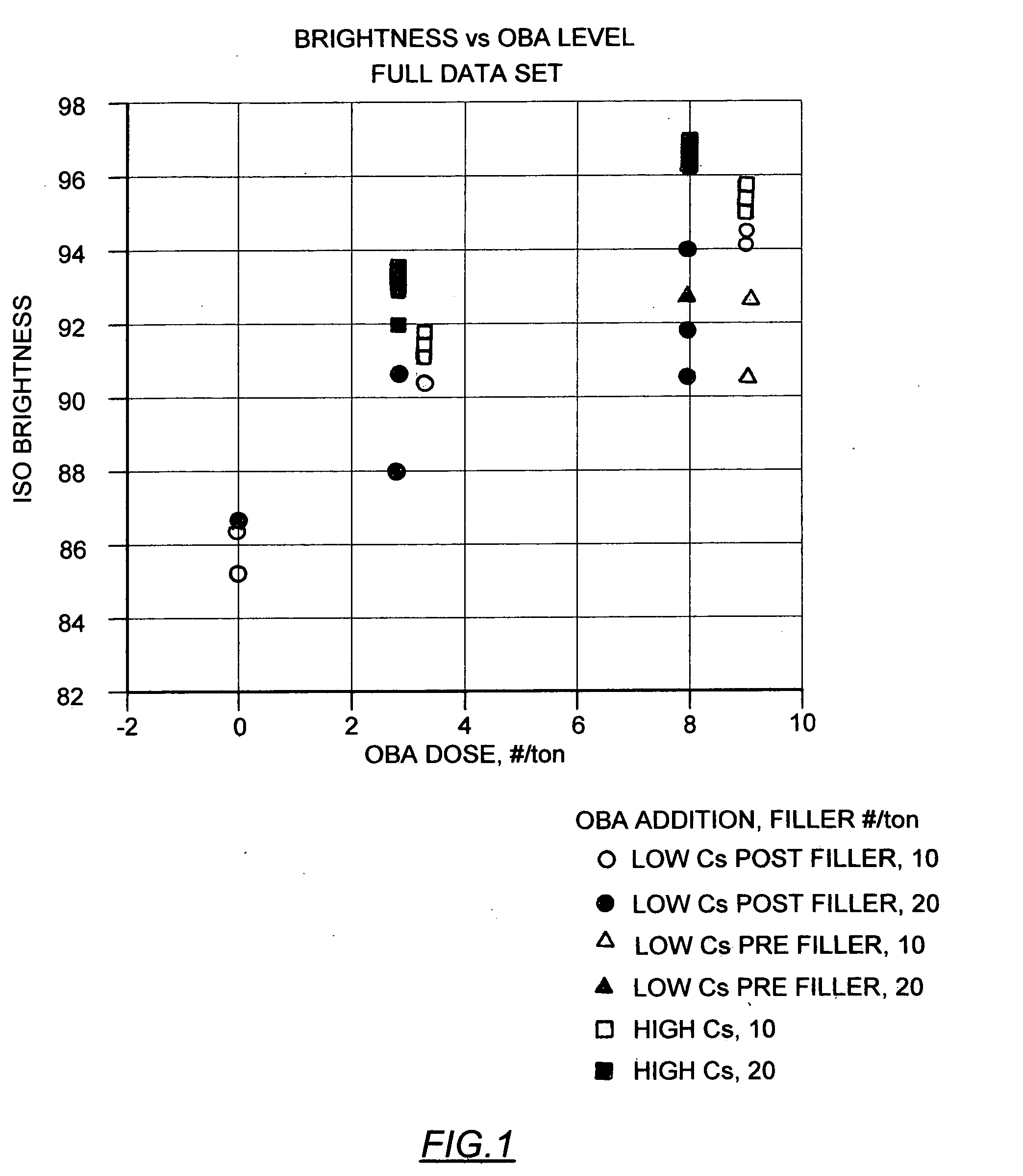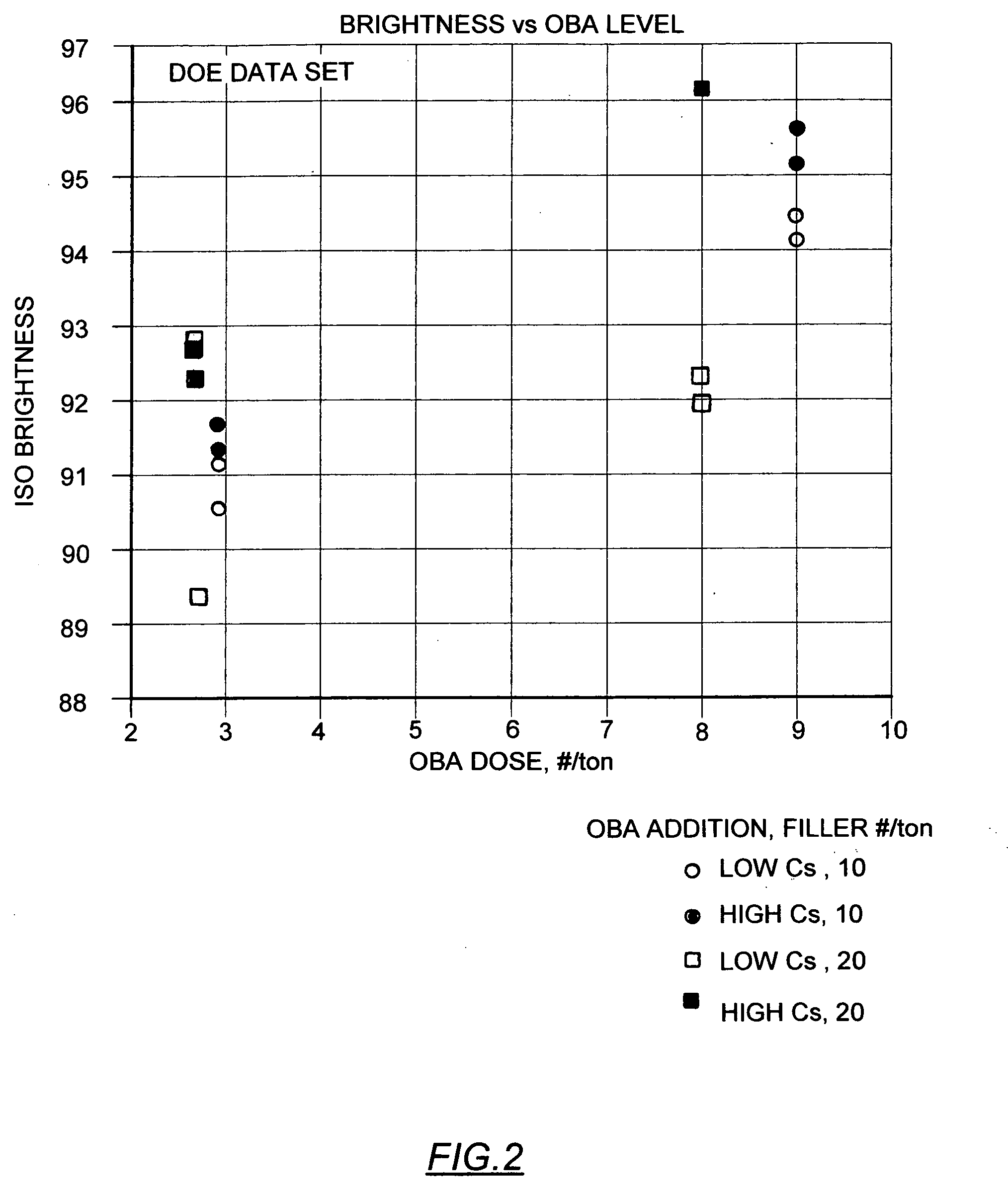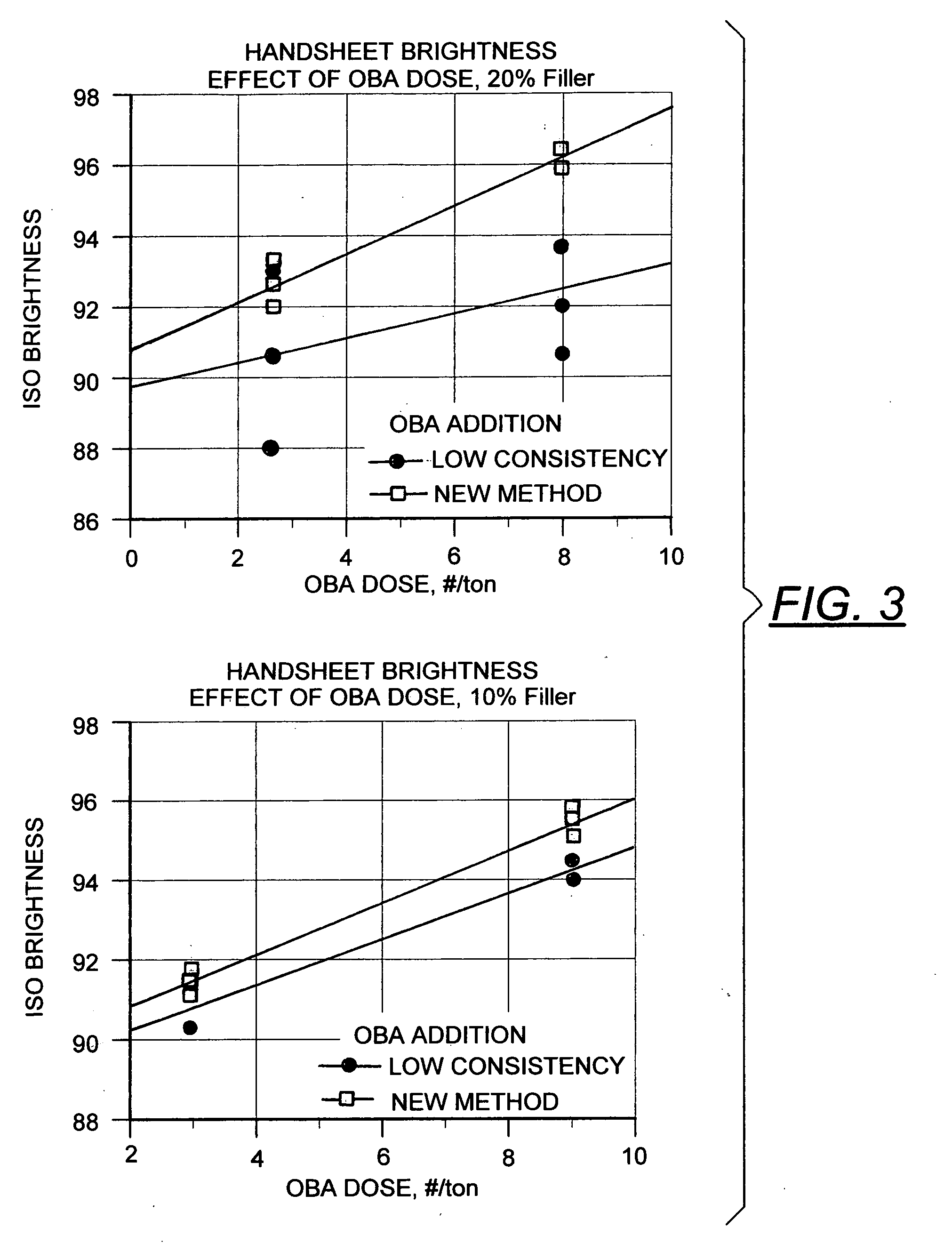Pulp and paper having increased brightness
a pulp and brightness technology, applied in the field of pulp brightness increase, can solve the problems of high price of bleaching, undesirable yellow-white product, and inability to achieve the most efficient method of boosting product whiteness
- Summary
- Abstract
- Description
- Claims
- Application Information
AI Technical Summary
Benefits of technology
Problems solved by technology
Method used
Image
Examples
example 1
[0057]From a commercial IP pulp mill in Southern US, samples of fully bleached hardwood and softwood Kraft pulp at the exit of the bleach plant were collected and used in high consistency OBA fixation experiments. Experimental conditions, including OBA type and pulp consistency were identical to those described in example 1. The as-received softwood pulp sample has a pH of 5.2 and the pH for the hardwood pulp sample was 6.7. All experiments were carried out for a duration of two hours, in 65° C. temperature bath. Prior to some of experiments on hardwood pulp, dilute hydrochloric acid solution was also added to the as-received mill pulp to lower its pH to 4.9 during the reaction with OBA. The following results were obtained:
TABLE 5Softwood atHardwood atHardwood atT-1005.2 pH6.7 pH4.9 pHChargeBrightnessBriteBrightnessBriteBrightnessBrite(lbs / ton)(GE)Gain(GE)Gain(GE)Gain085.5085.6085.602.589.43.987.51.990.14.55.089.74.288.52.991.35.710.091.25.789.33.715.091.56.090.24.692.46.8
example 2
[0058]From a commercial IP pulp mill in Europe, samples of fully bleached softwood and hardwood pulps, leaving the bleach plant were collected and used in OBA fixation experiments. The pH of the filtrate of both pulp samples was 3.0. Leucophor ANO, a disulphonate OBA product produced by Clariant, was used in this example. Fixation experiments were carried out with variable OBA charges, at 10% consistency, for two hours in 65° C. temperature bath. Observed changes in the pulp brightness as results of OBA fixation is as follows:
TABLE 6LeucophorHardwoodSoftwoodChargeBrightnessBriteBrightnessBrite(lbs / ton)(GE)Gain(GE)Gain089.3088.40593.64.392.84.31094.34.992.13.71592.73.490.42.02091.92.689.61.13089.3086.0−2.5
example 3
[0059]Samples of pulps and OBA of example 3 were used in this example. However, before mixing with OBA, dilute solution of NaOH as used to raise the pH of the pulp samples, from 3.0 to 5.7 for the case of hardwood and to 7.0 for the case of softwood. All other conditions were identical to those used in example 4. Observed changes in the pulp brightness as results of pH adjustment and OBA fixation is as follows:
TABLE 7LeucophorHardwoodSoftwoodChargeBrightnessBriteBrightnessBrite(lbs / ton)(GE)Gain(GE)Gain089.0087.90493.44.492.54.6894.95.893.85.91295.16.394.06.12095.56.594.86.83089.36.695.17.2
PUM
| Property | Measurement | Unit |
|---|---|---|
| temperature | aaaaa | aaaaa |
| time | aaaaa | aaaaa |
| temperature | aaaaa | aaaaa |
Abstract
Description
Claims
Application Information
 Login to View More
Login to View More - R&D
- Intellectual Property
- Life Sciences
- Materials
- Tech Scout
- Unparalleled Data Quality
- Higher Quality Content
- 60% Fewer Hallucinations
Browse by: Latest US Patents, China's latest patents, Technical Efficacy Thesaurus, Application Domain, Technology Topic, Popular Technical Reports.
© 2025 PatSnap. All rights reserved.Legal|Privacy policy|Modern Slavery Act Transparency Statement|Sitemap|About US| Contact US: help@patsnap.com



